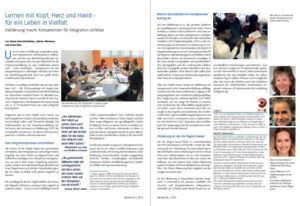 The German VIC partners DVV and BUPNET have released an article on the project in the German magazine dis.kurs – the magazine of the German Volkshochschulen (adult education centres)
The German VIC partners DVV and BUPNET have released an article on the project in the German magazine dis.kurs – the magazine of the German Volkshochschulen (adult education centres)
Please find the article on page 42 here.
Tag: LEVEL5
 The VIC team invites you to its final conference in Thessaloniki on 16th of October, 2019.
The VIC team invites you to its final conference in Thessaloniki on 16th of October, 2019.
Please find the conference agenda here.
The conference venue is: Aristotle University Research Dissemination Centre (KEDEA), 3is Septemvriou, Thessaloniki 546 36, Greece
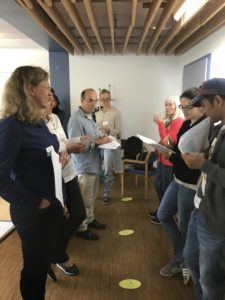 On 07.09.2019 we had the opportunity to provide a 2-hour workshop entitled “Assessing and enhancing integration competences of refugees” in the framework of the Language Day (German as a foreign language) organised by the Hessische Volkshochschulverband. The workshop involved teachers and counsellors that provide integration and languages courses for refugees.
On 07.09.2019 we had the opportunity to provide a 2-hour workshop entitled “Assessing and enhancing integration competences of refugees” in the framework of the Language Day (German as a foreign language) organised by the Hessische Volkshochschulverband. The workshop involved teachers and counsellors that provide integration and languages courses for refugees.
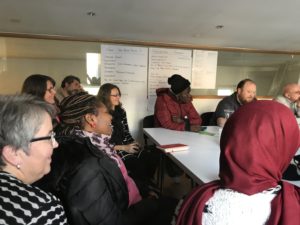 The third newsletter presents the blended learning programme consisting of national workshops in each partner country, e-learning modules, and the piloting phase. The e-learning course aims to introduce our concept and to support adult educators to plan, deliver and evaluate innovative integration learning activities and eventually to validate the integration competences developed in these learning offers. Please download the newsletter here.
The third newsletter presents the blended learning programme consisting of national workshops in each partner country, e-learning modules, and the piloting phase. The e-learning course aims to introduce our concept and to support adult educators to plan, deliver and evaluate innovative integration learning activities and eventually to validate the integration competences developed in these learning offers. Please download the newsletter here.
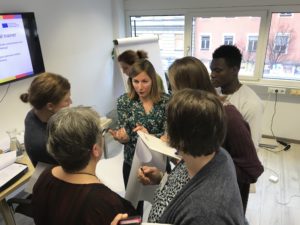 The German partners, DVV and BUPNET, were invited to provide a workshop in the framework of the conference entitled Angekommen in Deutschland – was nun? (please find the documentation in German here) organised by the German NA.
The German partners, DVV and BUPNET, were invited to provide a workshop in the framework of the conference entitled Angekommen in Deutschland – was nun? (please find the documentation in German here) organised by the German NA.
After a short introduction into the project, Sabine and Beater presented the concept of “integration” and the different competencies associated with it. The aim is to evaluate and visualise these competences using the LEVEL5 validation system. This has already been developed in various previous projects. The participants were given an overview of the LEVEL5 reference system and its application in the VIC project. Then all participants were given the task to firstly assess themselves in terms of their knowledge, skills and attitudes using the reference system for the competence “Intercultural Communication”. This self-assessment was then jointly evaluated and discussed – with the participants finally agreeing that a well-founded self-assessment is indeed difficult, but at the same time helpful and valuable.
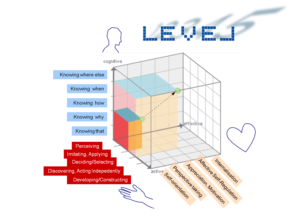 The second newsletter provides information on the validation system LEVEL that will be used in the context of the project. LEVEL5 will be one of the main elements of our VIC blended learning offer that will be available in autumn 2018.
The second newsletter provides information on the validation system LEVEL that will be used in the context of the project. LEVEL5 will be one of the main elements of our VIC blended learning offer that will be available in autumn 2018.

VIC will develop an approach to measure the effectiveness of the educational offers that have been put in place to ease immigrants’ pathways to integration, on the one hand, and to assess their impact on the individual integration competences of the immigrants, on the other hand. Hence the project is focusing on the validation of integration competences.
VIC will develop a validation system for this purpose which is based on the LEVEL5 approach. LEVEL5 is a unique system to validate competences and competence developments and to create learning environments and pathways in non-formal and informal learning contexts.

